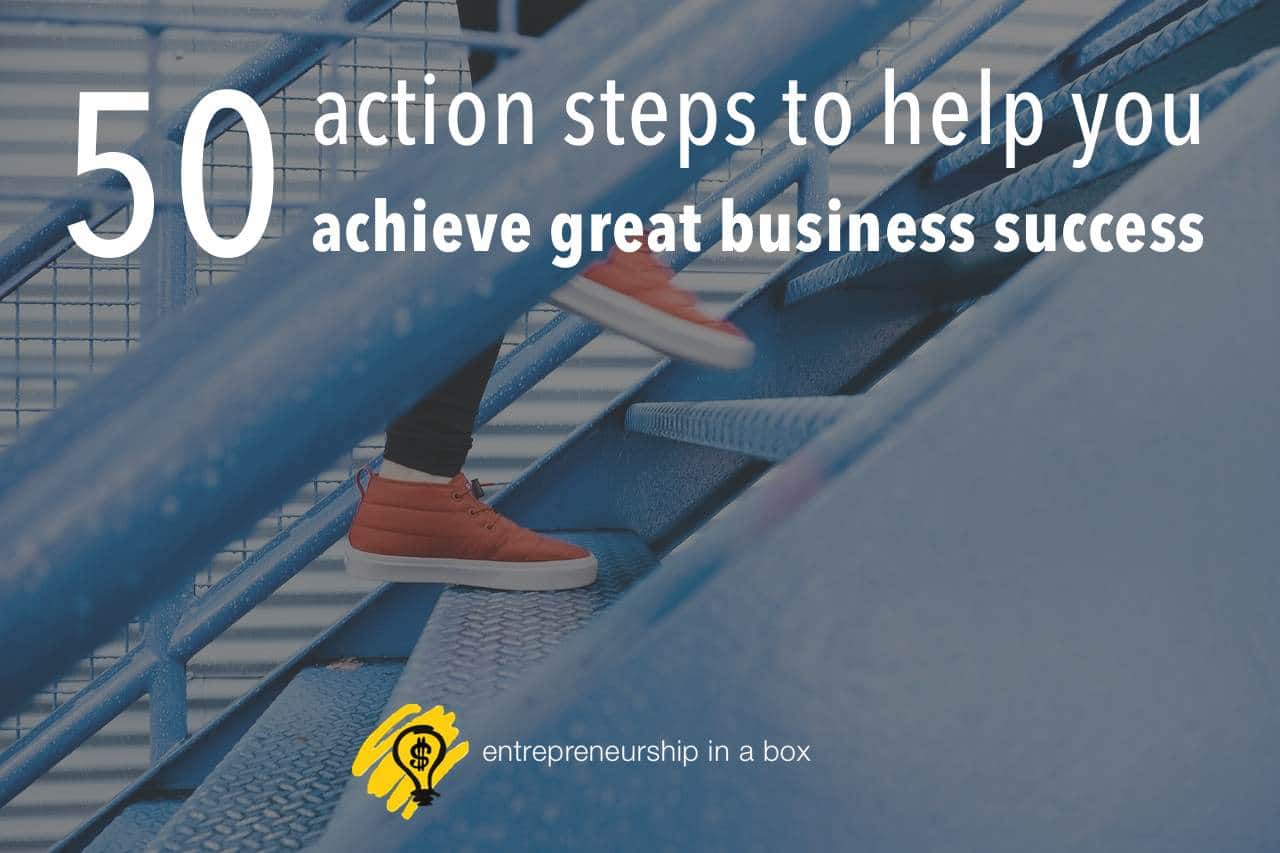Can you take certain action steps to make your business successful? There cannot be some template designed for simple action steps that will lead your company to success.
However, on the other hand, there is not a magic wand that can make the success because business success will depend on you as an entrepreneur.
If the success of your company will depend on you, then you must take some action steps that will lead you to that success.
Here, I want to share 50 possible steps that will bring you closer to the business success that is collected through my experience and experience with other successful entrepreneurs. For some entrepreneurs 30 steps will be enough, for others, all 50 will not be enough.
Let’s start now.
Step 1: Develop more than one business idea.
Step 2: Analyze all your business ideas.
Step 3: Make initial market research.
Step 4: Include conclusions from initial market research in the analysis of business ideas from step two.
Step 5: Select the best business idea that you can start.
Step 6: Develop a clear vision.
Step 7: Analyze your performances.
Step 8: Make needed adjustments.
Step 9: Find your risk tolerance.
Step 10: Develop your personal goals.
Step 11: Make initial business goals depend on your personal goals.
Step 12: Check whether personal and business goals are achievable and measurable.
Step 13: Remove all non-achievable and non-measurable goals or make them achievable and measurable.
Step 14: Make a commitment to all your achievable and measurable goals.
Step 15: Break initial overall goals into required action steps in order to achieve the goals.

Step 16: Start with your startup business plan.
Step 17: Develop the hypothesis for your business model, test them and choose the best.
Step 18: Define your business mission and prepare your mission statement.
✋ Warning
Need a mission statement that stands out? 🌟 Check out these 30 examples & templates to help you craft the perfect one! 💼
Step 19: Define the core business systems on which will be based all of your business operations, design their processes and working procedures.
Step 20: Define all needed resources for all your business systems.
Step 21: Verify that everything is ready for the start.
Step 22: Identify all competencies that you will need in order to achieve your business goals.
Step 23: Start hiring according to the identified competencies.
Step 24: Always reward yourself and your employees for each goal achievement.
Step 25: Identify all possible sources of changes.
Step 26: Implement a specific system that will help you in following all identified change sources.
Step 27: Define potential sources of resistance to changes.
Step 28: Find ways how you can remove possible sources of resistance to changes.
Step 29: Implement the required changes.
Step 30: Measure the implementation of changes.
Step 31: Make changes to be part of your business culture.
Step 32: Identify all main competitors to your company.
Step 33: Analyze all advantages of your competitors.
Step 34: Study all action steps that competitors make.
Step 35: Implement and improve the most valuable action steps from your competitors.
Step 36: Identify your most important customers.
Step 37: Segment them according to their needs, problems, and demographics.
Step 38: Reward the most important customers.
Step 39: Assess your customer’s satisfaction level.
Step 40: Reject everything that can cause customer dissatisfaction.
Step 41: Do financial forecasting.
Step 42: Compare the real financial situation with the forecast you have made.
Step 43: Identify potential expenditures that can be eliminated.
Step 44: Do cash flow analysis.
Step 45: Improve your cash balance.
Step 46: Conduct an ABC analysis of the products.
Step 47: Eliminate poor income or poor profit products.
Step 48: Define the most important social media platforms and open accounts to build your presence there.
Step 49: Start with your business blog.
Step 50: Build the relationship with current and potential customers online.





